Call us on (03) 6326 4955 (Launceston). (03) 6231 2931 (Hobart).
Design & Aesthetic
4 min read
When it comes to tiling, the pattern you choose can dramatically change the look and feel of a space. Beyond colour and material, the way tiles are laid influences texture, rhythm, and visual flow—turning a simple surface into a striking design statement. Here’s a guide to popular tile lay patterns and how they can transform your space.
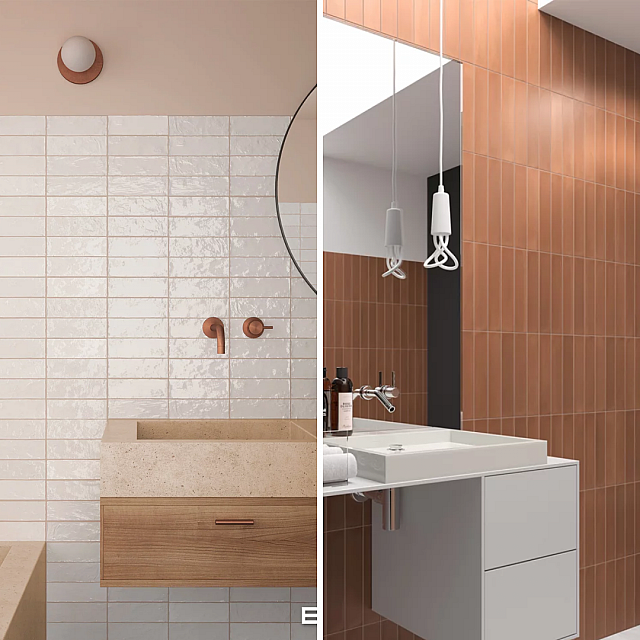
Stackbond
Tiles are aligned perfectly, with all grout lines forming continuous straight lines both vertically and horizontally.
- Effect:
Creates a clean, modern, and minimalist look. Perfect for contemporary interiors where simplicity and symmetry are key.
- Tip: Works best with large-format tiles and subtle grout colours to emphasize the sleek lines.
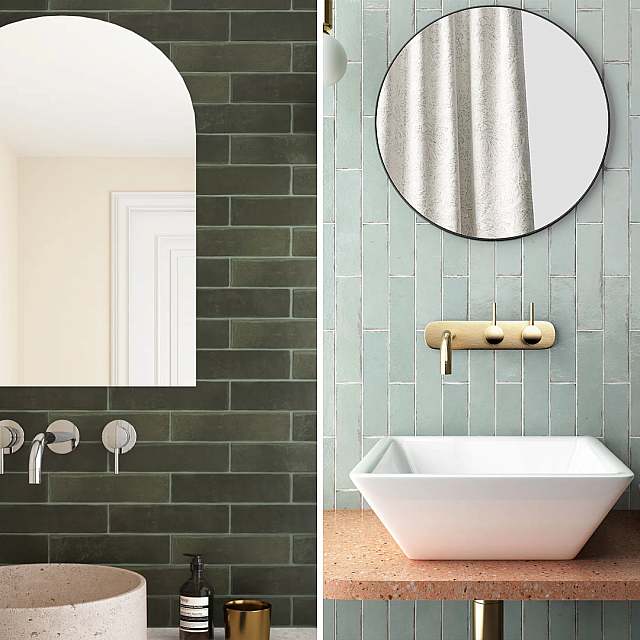
Brickbond
Tiles are staggered by half their length, similar to classic brickwork.
- Effect:
Adds a timeless, understated pattern that’s visually pleasing without being overwhelming. It also helps hide small imperfections in tile alignment.
- Tip: Ideal for subway tiles, feature walls, and flooring in both traditional and modern spaces.
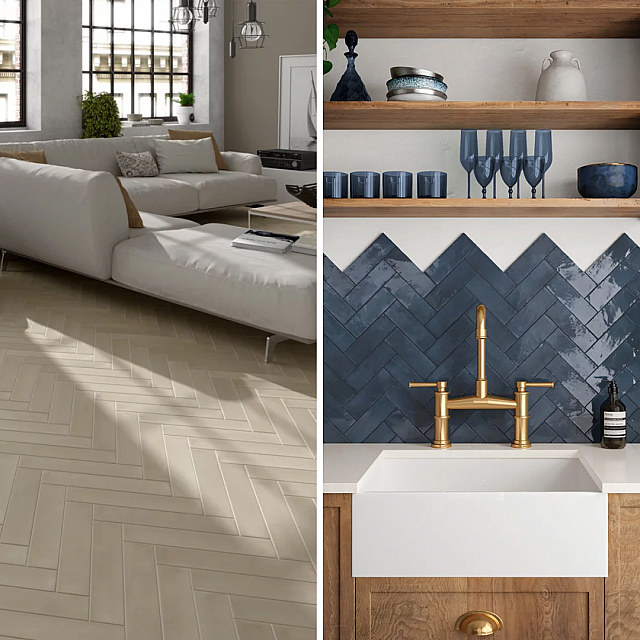
Herringbone
Tiles are laid at a 45° or 90° angle in a zig-zag pattern.
- Effect:
Adds dynamic movement and texture, giving floors or walls a sense of rhythm and sophistication. This pattern can make narrow spaces appear wider.
- Tip: Works beautifully with wood-look tiles or stone and perfect for entryways, kitchens, and bathrooms.
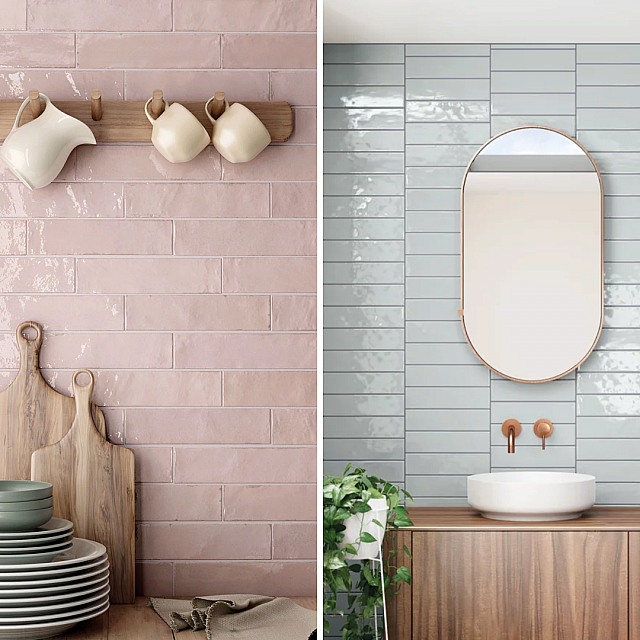
Horizontal Offset
Similar to brickbond, but with staggered tiles at a smaller offset—commonly 1/3 or 1/4 of the tile length.
- Effect:
Creates subtle movement and visual interest, ideal for elongating walls horizontally.
- Tip: Excellent for modern kitchens or bathrooms where you want a sleek, continuous flow.
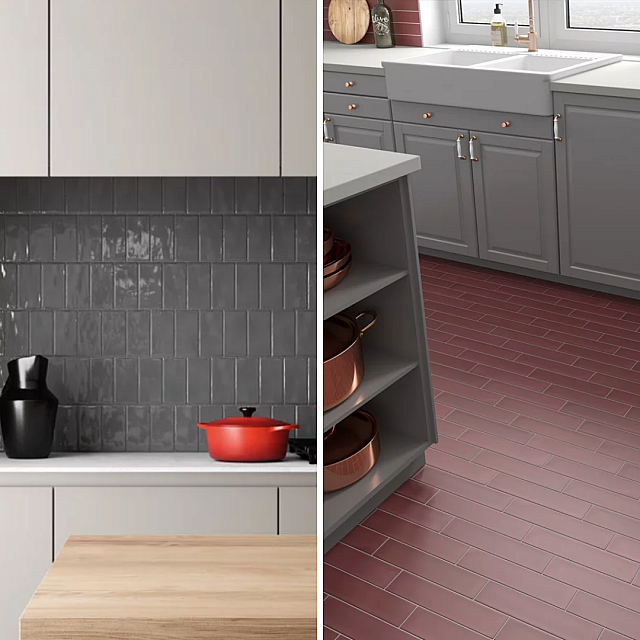
Vertical Offset
Tiles are stacked vertically but staggered slightly, creating a subtle, vertical flow.
- Effect: Draws the eye upward, adding height and making rooms feel taller.
- Tip: Perfect for bathrooms or feature walls in rooms with low ceilings that need a sense of elevation.

Basketweave
Tiles are paired in small blocks, interlacing horizontally and vertically to mimic a woven effect.
- Effect:
Offers a textured, traditional look that feels tactile and visually engaging.
- Tip: Ideal for classic bathrooms, powder rooms, or entryways seeking charm and character.

Diagonal
Tiles are laid at a 45° angle to the room’s walls.
- Effect:
Creates a sense of movement and sophistication, often making small rooms feel larger.
- Tip: Works well with square tiles and for adding visual interest to otherwise plain surfaces.

Combination Patterns
Mixing multiple lay patterns, sizes, or shapes in one area.
- Effect: Produces a unique, bespoke look that showcases creativity and craftsmanship.
- Tip: Great for statement walls, feature floors, or artistic splashbacks, but keep balance to avoid visual clutter.
The right tile lay pattern can completely elevate your design—from creating clean minimalism to dramatic visual interest. By experimenting with alignment, angle, and rhythm, you can achieve a surface that complements your style while adding depth and dimension to your space.
Need help choosing the perfect tile pattern? Talk to one of our expert design consultants or book a design consultation. We’ll guide you through the possibilities and ensure your tile layout works beautifully in your home.
Published on 24th September 2025
More from the blog

Design & Aesthetic
4 min read
Finding the Perfect Tile Texture for Your Space
From soft matt to polished shine, find the perfect tile finish to shape your home’s atmosphere.
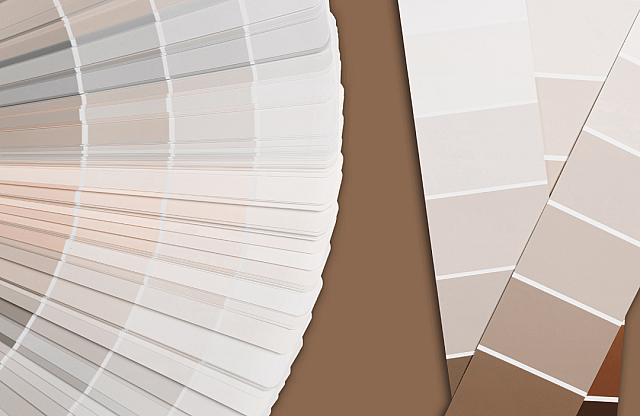
Inspiration
4 min read
Dulux Colour Forecast 2026 with Tiles
Discover how Dulux’s 2026 Colour Forecast — Elemental, Ethereal and Evoke — comes to life through texture, tone and curated tiles.
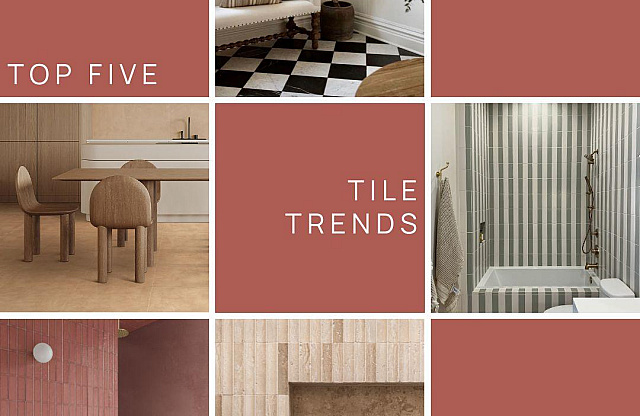
Inspiration
4 min read
Top 5 Tile Trends for 2025
Discover the top five tile trends for 2025—bold colours, earthy textures and materials, and timeless patterns to transform your space.